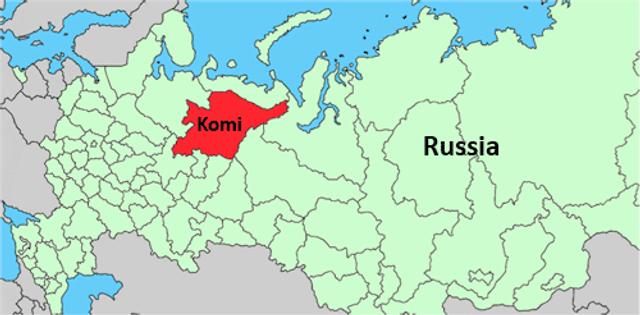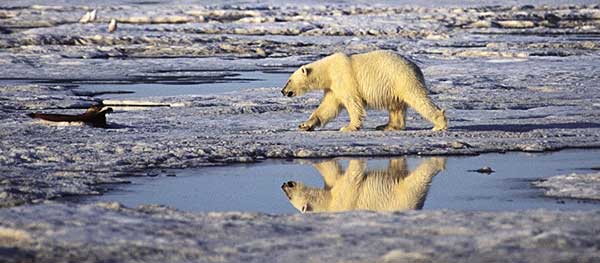David Levine
A series of explosions at the Severnaya coal mine in Vorkuta, Russia, which is about 1800 km northeast of Saint Petersburg and slightly north of the Arctic Circle, caused the deaths of 36 people on February 25 and 28. This included 31 mineworkers and 5 rescue workers, all men between the ages of twenty-four and fifty-five. A three-day official mourning period in Russia’s Komi Republic began Sunday.
A sudden methane discharge and two explosions occurred at the mine on February 25, causing a collapse and fire. At the time, 111 people had been inside the mine, of whom four were killed immediately. Eighty-one were rescued, of whom nine had been injured, while 26 remained “missing,” trapped in mine shafts that had become obstructed in the collapse.
Hundreds of personnel from the Russian Ministry of Emergency Management were deployed for rescue operations at the mine. On Saturday, February 27, some of the rescue workers warned of the danger of further explosions. Later on Sunday, Minister of Emergency Management Vladimir Puchkov told television network Pervyy Kanal, “We are compelled to state that the conditions in [the part of the mine where the miners were trapped] cannot allow a human being to survive. The data show that in the underground area where the 26 miners were located there are high temperatures and no oxygen.” This statement was confirmed by Denis Paykin, Technical Director of mine operator Vorkutaugol.
 Komi Republic
Komi Republic
As late as the morning of February 28, Vorkutaugol had denied that the trapped mine workers had been given up for dead, claiming that rescue operations were ongoing. However, it emerged later that day that a third explosion in the early morning hours of February 28 had caused the deaths of 5 rescue workers and 1 mineworker, and that an additional 5 people had been injured. After this, rescue operations were halted.
Puchkov, as well as Deputy Prime Minister Arkady Dvorkovich and parent company Severstal President Aleksey Mordashov, had flown out to the mine site. According to Dvorkovich, a preliminary government investigation concluded that the explosions resulted from natural factors. He asserted that officials from the Federal Service for Environmental, Technological and Nuclear Oversight had inspected Severstal just a few days before the disaster; that the issues identified in the inspection were not related to the explosions at Severnaya; and that the methane sensors in the mine had recorded below-critical levels and had not detected any dangers.
On Monday, Dvorkovich explained to a meeting with Vice President Dmitry Medvedev, “It would have been impossible to prevent the explosion at Severnaya. The methane level rose spasmodically. That is, there was a spasmodic discharge. There was no gradual rise in the gas level. The gas sensors didn’t detect anything, and it actually would have been impossible to prevent this particular discharge using safety control measures.”
Nevertheless, the Investigative Committee of Russia has initiated a criminal prosecution over violations of safety regulations. As mine disaster expert Aleksandr Gerusov explained to media agency RBC, “If all safety systems are functioning properly, the likelihood of a methane explosion or rock burst is practically reduced to zero. Statistically, 90 percent of all mine disasters result from the human factor.”
Surviving workers and the families of the killed workers likewise dispute the government’s assessment. Mikhail Momot, a Severnaya mineworker who survived because he was on vacation, told Internet news agency Rus2Web, “Everybody who was working there knew that a large quantity of methane gas had accumulated over recent months. However, the mine’s management for some reason didn’t do anything about it.”
Similarly, Konstantin Pimenov, a miner and Vorkuta City Council member, told Rus2Web, “I had spoken directly with Severnaya miners and technical specialists. They had told me that there was a significant increase of methane emissions going on. All of the officials know this, but they just left it to chance. They hoped that it would pass somehow.”
Darya Tryasukho, daughter of killed miner Vyacheslav Tryasukho, posted on her page on the VKontakte social network website photographs of a portable gas sensor belonging to a Severnaya miner that show a 2.55 percent methane level recorded on February 11, 2016. According to Russian government regulations, the maximum acceptable concentration of methane in a coal mineshaft is 2 percent.
In an interview with news agency LifeNews, Natalia Tryasukho, the widow of Vyacheslav Tryasukho, explained that her late husband had warned of the danger of a disaster in the mine.
“Just a few days before the tragedy, my husband had said that there was the danger of a rock burst. The level of gas in the air was very high, but management had taken all possible measures to keep gas safety sensors from functioning. They covered the sensors up and buried them. They did this because the system is automated, and when the sensors are activated, everything stops. They demanded production, and nothing else. Safety concerned no one,” Natalia Tryasukho explained.
Severnaya miner Sergey Proskuryakov, who survived the disaster because he worked during a different shift, supported the Tryasukhos’ contentions regarding gas sensors. He told Rus2Web that “it’s a well-known fact that they tampered with the sensors that record the methane gas content in the air in the mine. Following management instructions, the sensors were configured so as not to go too high and only to show numbers that fall within the limit. In reality, the methane content in the mine is significantly higher than the safety rules require. Now those who gave the directions to tamper with the sensors should face the relatives of the dead miners.”
Severstal representative Vladimir Zaluzhsky claimed to Business FM that tampering with the gas sensors was unlikely, as they are programmed to detect attempts to modify their functioning and shut off mine operations in case they do detect such activity.
Following a disaster at the Raspadskaya mine in Kemerovo Oblast in 2010, which eventually caused 91 fatalities and 99 injuries, similar assertions had been made that mine workers themselves had been instructed to glue the gas safety sensors so that they could continue production after gas levels in the air reached the critical level.
Vorkuta resident Madlena explained to Business FM, “There were reasons to anticipate a disaster. There had been tremors, and the methane level already exceeded the normal numbers. Everybody knew this. There were warning signs. People came from work just a couple of weeks ago and were vomiting. Some of them had nosebleeds. You understand what it means to work in that kind of atmosphere. Everything was already going in this direction.”
Severnaya coal mine is owned and operated by coal company Vorkutaugol, which itself is a subsidiary of Severstal, which in its turn belongs mostly to Aleksey Mordashov, Russia’s fifth richest person. He owns 79 percent of Severstal and has a net worth of approximately US$11.1 billion. In 2015 Severnaya produced 2.874 million tons of raw coal and 1.5 million tons of coal concentrate, comprising 27 percent of Vorkutaugol’s aggregate production and 15 percent of production in the Komi Republic. 1084 workers were involved in the development of Severnaya, including 668 at the mine itself.
Representatives of Severstal, whose stock fell 3 percent after news of the disaster, have said that they hope to return the mine to operational condition after pumping nitrogen into the disaster area and then evacuating air from it. However, all this will take at least half a year. In the meantime, the surviving workers are to be transferred to nearby mines.
Since it began operation in 1969, there have been three disasters at Severnaya, all within the last 16 years. In 2000, a fire that resulted from safety violations in the conduct of welding operations at the mine administration building led to the deaths of ten people, including an 8-year-old child. A mine collapse in 2004 caused the deaths of five miners. And two miners were killed in another collapse in 2011.
A methane discharge and resulting explosion in 2013 at the nearby Vorkutinskaya mine, also owned by Severstal, caused the deaths of 19 people. Relatives of victims commented that the same person who had been in charge of safety operations at Vorkutinskaya later occupied the same position at Severnaya. Vorkuta resident Madlena, quoted above, confirmed this. “The person responsible for safety at Severnaya had been at the central mine when the explosion occurred at the Vorkutinskaya mine in 2013. They didn’t fire him. They just transferred him to Severnaya.”
Similarly, miner Sergey Proskuryakov commented, “I hope that the commission conducts an objective investigation, so that the guilty parties don’t get away with it, which is what happened three years ago at the Vorkutinskaya mine. That mine’s management was not held accountable. Moreover, after the disaster, the Vorkutinskaya mine administrators were given managing positions at our mine, Severnaya, and continued working there undisturbed.”
Proskuryakov continued, “The mine’s administration is constantly pressuring and intimidating people. ‘If you say too much, you’ll have to leave,’ they say. Company managers behave like slave owners. But everybody keeps quiet and is afraid of getting fired. This is what that silence has led to.”
Vorkuta was the site of Vorkutlag (initially called Ukhtpechlag), one of the Stalinist regime’s largest prison camps, which also had been occupied primarily in the industrial production of coal and at its peak in 1951 held over 70,000 prisoners. A hunger strike initiated by Trotskyists at the camp in autumn 1936 led to an extended conflict that ended in the massacre of 2901 people, including both political prisoners and their family members, in a series of mass executions in spring 1938.
A massive strike that came to be known as the Vorkuta Uprising occurred at the camp in June-August 1953, just a few months after the death of Joseph Stalin on March 5, 1953. The Soviet state’s suppression of that uprising involved the killing of at least 53 strikers.


